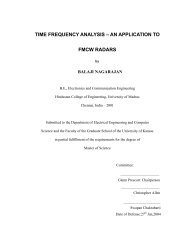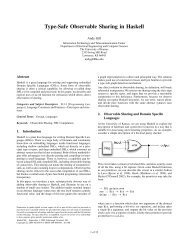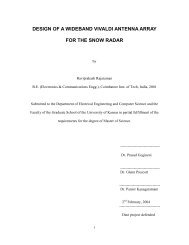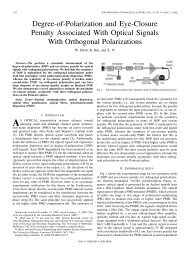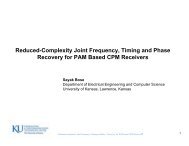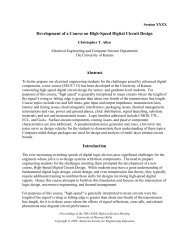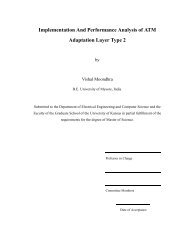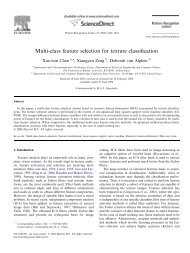Algorithms and Data Structures for External Memory
Algorithms and Data Structures for External Memory
Algorithms and Data Structures for External Memory
You also want an ePaper? Increase the reach of your titles
YUMPU automatically turns print PDFs into web optimized ePapers that Google loves.
144 <strong>External</strong> <strong>Memory</strong> Programming Environments<br />
size to the block size, <strong>and</strong> running a copy of the pipeline on each node<br />
of a cluster.<br />
Google’s MapReduce [130] is a framework-oriented system that supports<br />
a simple functional style of batched programming. The input data<br />
are assumed to be in the <strong>for</strong>m of a list of key-value pairs. The programmer<br />
specifies a Map function <strong>and</strong> a Reduce function. The system<br />
applies Map to each key-value pair, which produces a set of intermediate<br />
key-value pairs. For each k, the system groups together all the<br />
intermediate key-value pairs that have the same key k <strong>and</strong> passes them<br />
to the Reduce function; Reduce merges together those key-value pairs<br />
<strong>and</strong> <strong>for</strong>ms a possibly smaller set of values <strong>for</strong> key k. The system h<strong>and</strong>les<br />
the details of data routing, parallel scheduling, <strong>and</strong> buffer management.<br />
This framework is useful <strong>for</strong> a variety of massive data applications on<br />
computer clusters, such as pattern matching, counting access frequencies<br />
of web pages, constructing inverted indexes, <strong>and</strong> distribution sort.







